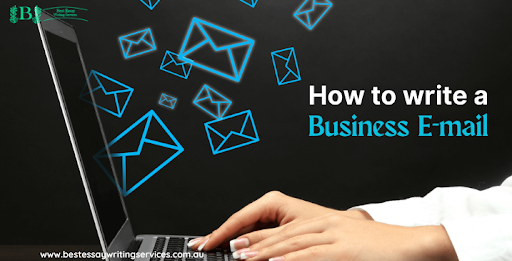E-mails are modern tools for business-oriented communication. In the past, people used to write letters by hand. However, digital advancements have changed the style of professional communication. Thus, as a working professional, you must know the proper business letter format to effectively communicate your thoughts and ideas.
It is essential to realize that business letters represent your employer. Therefore, you cannot be casual when composing them. You should take care of typos and grammatical errors. In addition, you need to understand the correct way to organize information and the total number of paragraphs in your letter. Today, we will share some specific and highly useful tips to help you quickly craft an effective business letter.
What is a business email?
Business email is essential for employees and external organizations, including customers, clients and stakeholders.
As well as sharing information and updates, business email can be used to market products, manage complaints, support customers and engage suppliers. Simply put, a business email is the lifeblood of any modern company.
The purpose of business emails is usually clear, concise, and polite. However, business email doesn't need to be boring. An effective business email can inform, engage and inspire any reader if written correctly.
How to Format Business Email Writing
Indentation
Emails can have indentation or justification formats, depending on the sender's preference. However, if the first paragraph has an indentation, the rest of the section should have the same indentation throughout the text of the email. In turn, the main purpose of indentation is to maintain format consistency throughout the content. Therefore, alternatives to justification and indentation are permitted if they provide an excellent textual presentation.
Font size
Writing both email formats in font size 12 gives the email excellent visibility and presentation. In this case, the most common fonts used in writing an email include Arial, Calibri, Verdana, and Times New Roman. Furthermore, all these email formats are usable if they bring the desired visibility. Thus, regardless of font type, emails serve their intended purpose.
Colour
Formal emails should have limited coloured text. In this case, too much use of coloured material creates an unattractive document that the recipient may dislike. However, with proper use of words, more essential points can be appropriately emphasized. Therefore, coloured text can be useful when the sender wants the receiver to notice the content.
Tips for Creating a Business Email
Formal style. The formal style aims to reach an agreement essential to the business. Therefore, be brief and precise, and avoid clichés.
Language. Writing international business emails in a global language (English) is recommended. However, your national language should be used if business communication occurs within the same country.
Subject. It should be prepared in a short, clear and precise style, as people get lots of emails daily and do not have unlimited time. Do not write long compound sentences. Ensure the subject line will be easily understood, especially if the language you use is not the native language of the recipient. If your email is essential, use the word urgent at the beginning of the subject line.
Strategies for Writing an Effective Business Email
Greet email recipients
Take the time to write a greeting to the recipients at the beginning of your email. Personalize the email by including the recipient's name whenever possible. This will make your greeting seem more genuine. It also shows people that someone took the time to be more personal and didn't send the same email to thousands of people.
Use subject line
We cannot stress enough how important it is to use a subject line. How often have you deleted a message without reading it because there was no subject? Other people do too, and if you aren't using successful subject lines, many of your emails will likely get deleted. So include a successful, clear, and concise subject line.
Be careful with your tone
Communicating via email can be much more difficult because the reader cannot see your body language and hear your voice. Choose how you word your email carefully to avoid sounding mean, pushy, etc. Don't write anything that can be taken the wrong way.
Drop attachments
If there's something you want your readers to see, copy and paste it directly into the email. Don't make them take extra steps to open the attachment. Or, enclose the document, copy and paste the most important part, and let readers decide whether to open the attachment and read the rest.
Copyright © 2026 getessayservice.com

